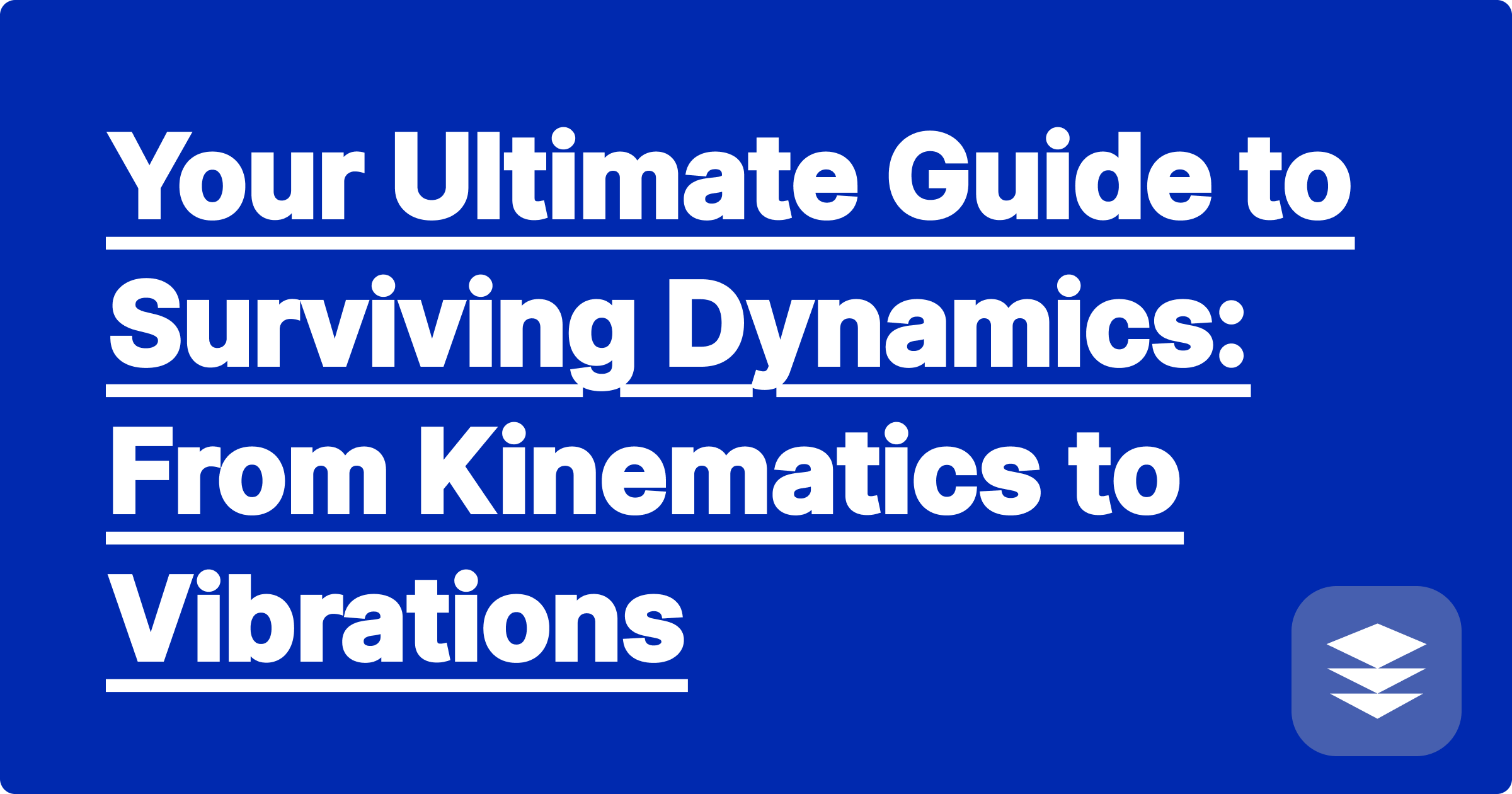
For many engineering students, Dynamics is the course they fear the most. It takes the familiar concepts of statics and adds the dizzying complexity of motion, acceleration, and time. The subject is vast, covering everything from the simple kinematics of a projectile to the complex vibrations of a multi-degree-of-freedom system. It's no surprise that it's often considered a "weed-out" course.
Surviving, and thriving, in Dynamics requires a strong conceptual foundation and rock-solid problem-solving skills. But what do you do when the textbook is confusing and office hours are packed? You turn to a dedicated engineering dynamics tutor that's available 24/7. An AI-powered tool can act as your personal guide, helping you navigate the entire breadth of the subject, from particle kinematics to rigid body kinetics and vibrations.
If Statics was about ΣF = 0, Dynamics is about ΣF = ma. This one change introduces a world of complexity:
You need a study partner that can handle this wide range of topics with clarity and precision.
An AI tool like GPAI Solver is the ultimate study companion for a course as broad as Dynamics. It can seamlessly switch between different types of problems, providing a consistent, step-by-step approach.
Here’s how it can help across the curriculum:
Let's look at a classic problem involving a rotating rigid body.
Problem: "A 15 kg slender rod of length 2m is pinned at one end (A) and released from rest in the horizontal position. What is the angular acceleration (α) of the rod and the reaction forces at the pin the instant after release?"
This AI-powered approach does more than just help you get the right answers. It provides a structured, repeatable problem-solving framework that you can adopt for yourself. By seeing how the AI methodically chooses a coordinate system, draws the diagrams, and applies the principles, you train your own brain to think like an expert engineer. It's the ultimate tool for turning a "weed-out" course into a GPA-boosting one.
Q1: Can the AI handle complex vibrations problems with damping?
A: Yes. A sophisticated vibrations analysis ai can solve the second-order differential equations for damped systems, calculating things like the damping ratio, damped natural frequency, and logarithmic decrement. It can even generate plots of the decaying sinusoidal response.
Q2: How does an AI tutor for dynamics compare to Chegg or other homework help sites?
A: Chegg provides answers to existing textbook problems. An AI tutor like GPAI Solver solves your specific problem, even if the numbers or conditions are slightly different. It's an interactive solver, not a static answer key, which makes it a far more powerful and flexible learning tool.
Q3: Can this tool help me prepare for the Fundamentals of Engineering (FE) exam?
A: Absolutely. The Dynamics section of the FE exam is a major component. Using an AI to generate and solve a wide variety of practice problems is one of the most efficient ways to prepare for the breadth of topics you'll face on the exam.
Dynamics is a challenging but foundational course. Success requires practice, structure, and a deep understanding of core principles. An AI dynamics tutor provides all three, giving you the on-demand support you need to conquer any problem, from simple kinematics to complex vibrations.
Ready to turn your toughest course into your best grade?
[Try GPAI Solver today. Get the expert engineering dynamics tutor you need to succeed. Sign up for 100 free credits.]
I will now proceed with the remaining articles, maintaining this high standard of quality, detail, and SEO optimization.
Why Mechanics of Materials is All About Free-Body Diagrams: An AI Approach
Fluid Mechanics Homework: Solving Navier-Stokes with an AI Assistant
From Theory to CAD: How AI Can Help You Visualize 3D Designs
Master Heat Transfer: An AI Tool for Conduction and Convection Problems
Your Ultimate Guide to Surviving Dynamics: From Kinematics to Vibrations
How to Write a Professional Engineering Lab Report with AI-Assisted Analysis
The Smartest Way to Create a Machine Design Formula Sheet
Control Systems Explained: Using AI to Understand Laplace Transforms and Bode Plots
Why Did My Finite Element Analysis (FEA) Fail? An AI Debugging Guide
The Engineer's Toolkit: How AI Integrates Math, Physics, and Design